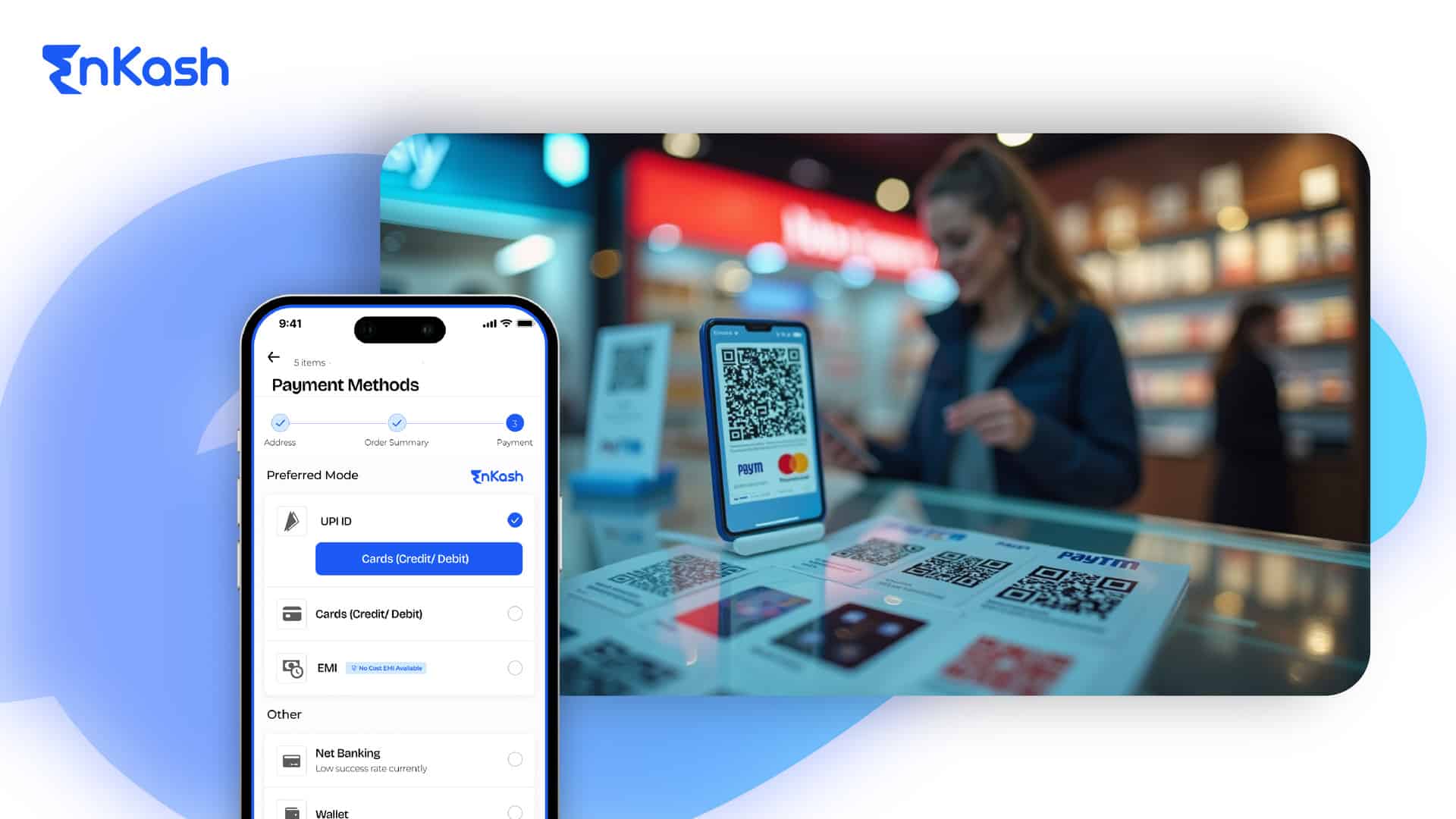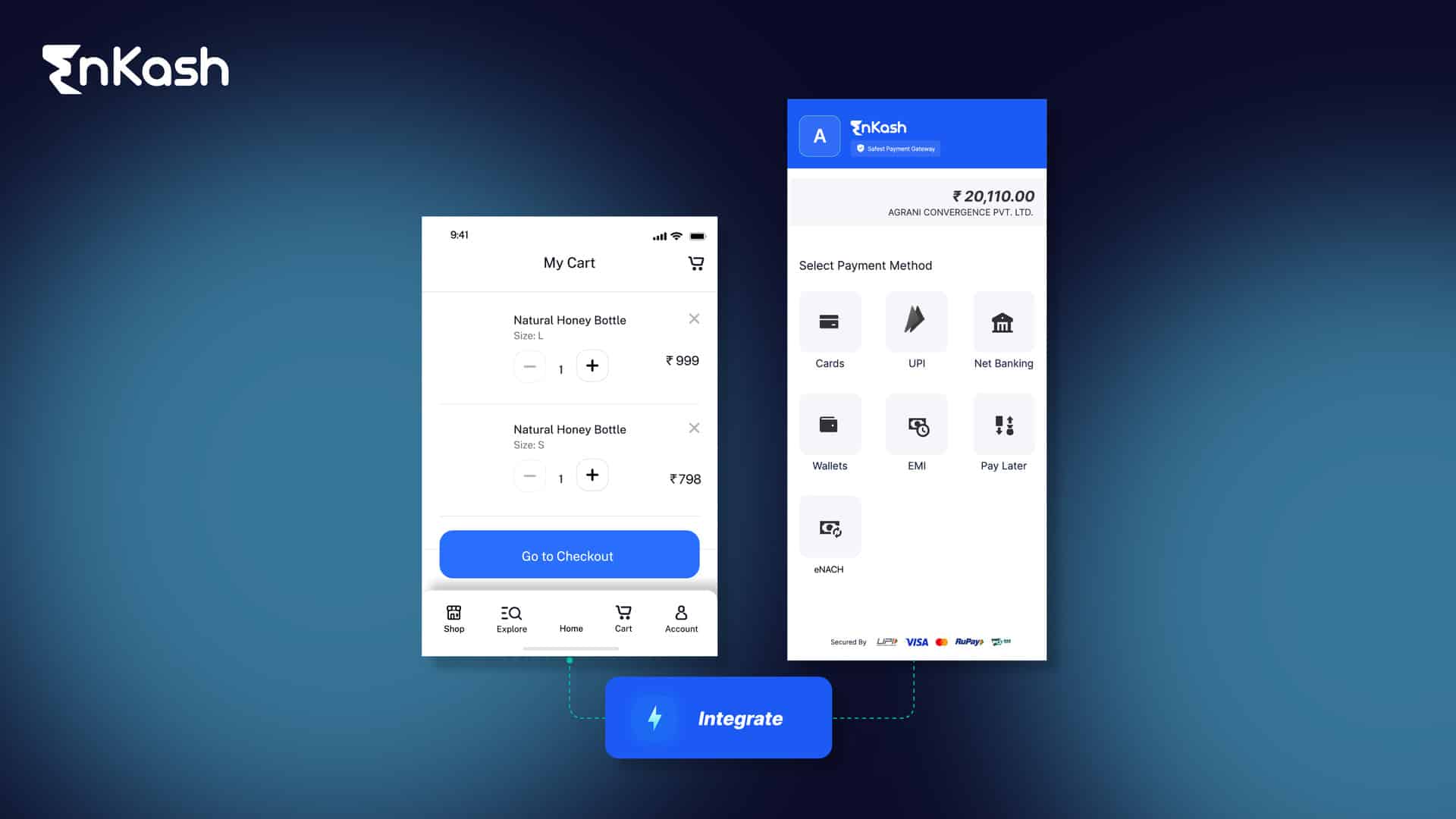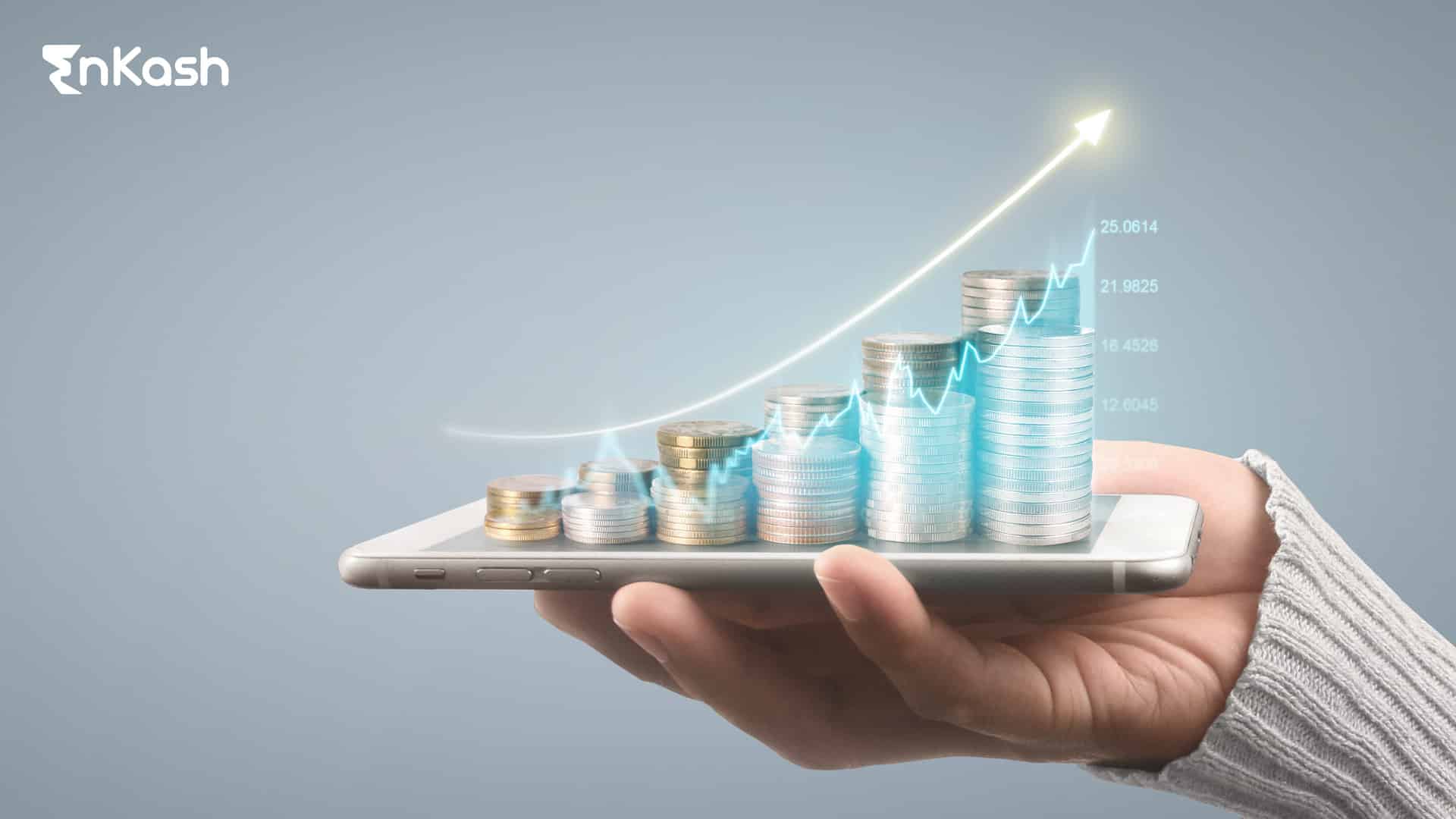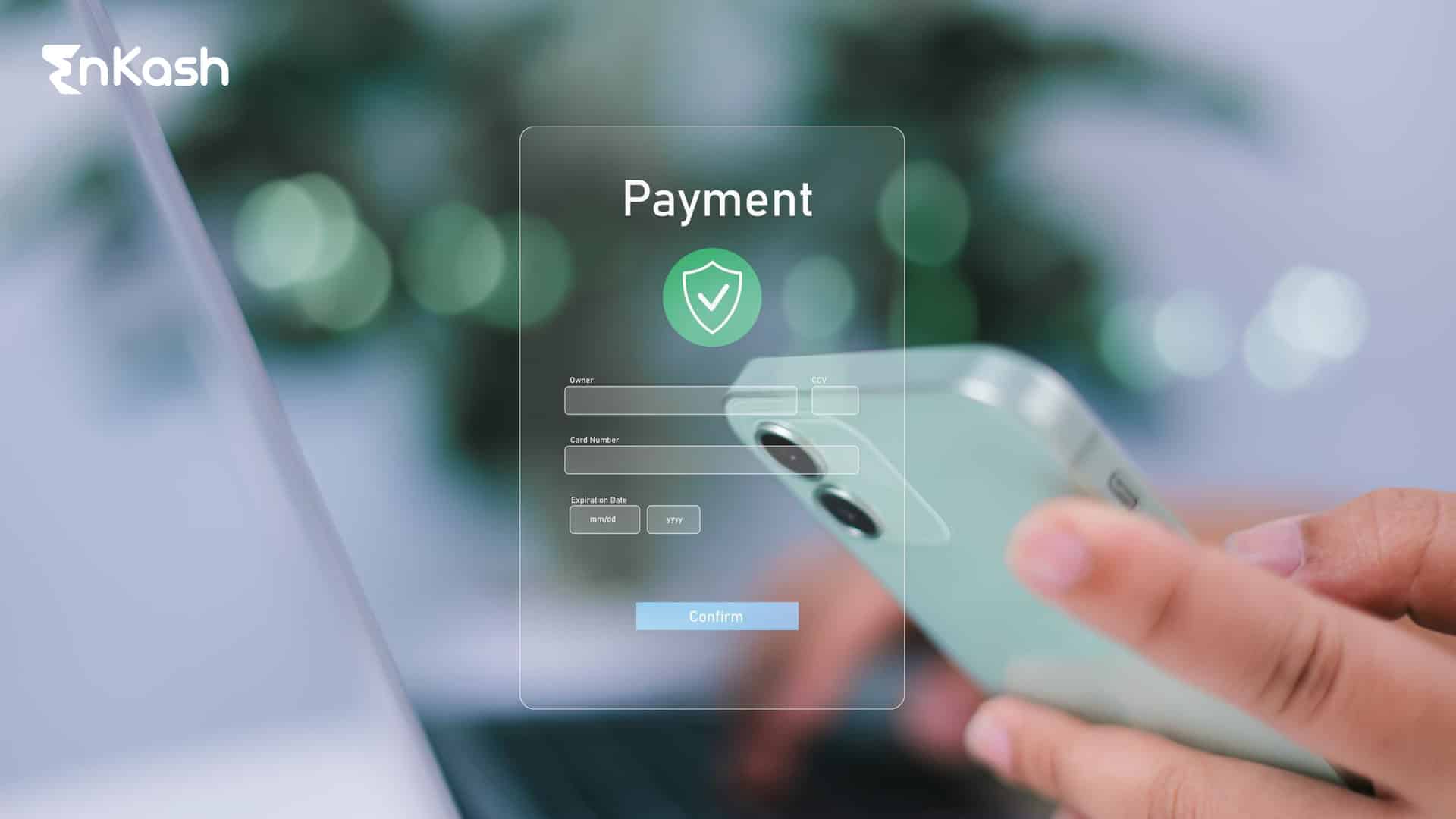The Unified Payments Interface, known as UPI, has completely changed how people make payments. It allows users to transfer money instantly between bank accounts using their mobile phones. It does not require complicated bank details. Instead, it uses a virtual payment address (VPA), which is easy to remember. This system has made digital payments simple, fast, and secure for millions of people.
UPI was introduced by the National Payments Corporation of India (NPCI) in 2016. Since then, it has grown rapidly and has become the most popular payment method in India. It is now used by millions of people for everyday transactions. Paying for groceries, sending money to a friend, or paying bills, UPI has made it all possible in a few seconds.
This blog explores UPI in detail, covering what UPI is, why it was created, and how it works. It also highlights UPI’s impact on India’s digital payment landscape, its global relevance, and how it compares with other payment systems. Readers will gain a deep understanding of how UPI functions, its benefits for users and businesses, and how it has set a new standard for digital payments worldwide.
What is UPI? Definition and Evolution
UPI is a real-time payment system that allows money to be transferred instantly between bank accounts using mobile devices. It was launched in 2016 by the NPCI, a not-for-profit organization created by the Reserve Bank of India (RBI) and the Indian Banks’ Association (IBA).
How UPI Works
UPI connects multiple bank accounts to a single mobile application, allowing users to make payments, receive money, and check their balances in one place. Instead of requiring account numbers and IFSC codes, UPI uses a Virtual Payment Address (VPA), also known as a UPI ID. A UPI ID looks like username@bankname, making it easy to share and remember. For example, if someone’s name is Ravi and he uses ICICI Bank, his UPI ID may look like ravi@icici. This system eliminates the need to enter complex details, making transactions smoother and faster.
When a UPI transaction occurs, it is routed through a centralized system managed by NPCI. The system verifies the sender’s credentials and securely transfers the amount to the recipient’s bank account in real time. This technology ensures that transactions are completed within seconds, making it a preferred choice for millions.
Read More: UPI Payments
History of UPI and its Launch
UPI has come a long way since its initial rollout in 2016. What started as a small initiative with a few banks has now become India’s most widely used digital payment system. The journey of UPI has been marked by constant improvements, new features, and rapid adoption across the country.
Launch and Early Adoption
UPI was officially launched in April 2016 with a pilot project involving 21 banks. The public rollout took place in August 2016, when participating banks introduced UPI-enabled apps on app stores. During the initial phase, UPI supported basic peer-to-peer (P2P) money transfers, allowing users to send and receive money using their UPI IDs.
In the first few months, adoption was slow, as many users were still unfamiliar with the system. However, UPI received a major boost in December 2016 when the Indian government launched the BHIM (Bharat Interface for Money) app. BHIM was promoted heavily and made UPI accessible to millions of users. This app simplified digital payments and encouraged people to shift from cash to digital transactions.
Growth After Demonetization
The timing of UPI’s launch coincided with the demonetization drive in November 2016, which led to a sudden shortage of cash in the country. As people searched for alternative payment methods, UPI emerged as a convenient and secure option. The combination of BHIM’s user-friendly interface and the growing need for digital payments led to a surge in UPI adoption.
By mid-2017, UPI was processing over 10 million transactions per month. New apps such as PhonePe and Google Tez (now Google Pay) entered the market, giving users more choices and driving further adoption. These apps offered attractive cashback offers and referral bonuses, which helped increase user engagement.
Introduction of UPI 2.0 and New Features
In August 2018, NPCI launched UPI 2.0 with several new features that enhanced the platform’s functionality. The main updates in UPI 2.0 included:
- Overdraft Account Linking: Users can link their overdraft accounts to UPI, allowing them to make payments even when their main account balance is low.
- E-Mandates for Recurring Payments: UPI 2.0 introduced the ability to set up recurring payments, such as subscription fees and utility bills, through e-mandates.
- Invoice in the Inbox: Merchants can now send invoices directly to the payer’s UPI app, allowing users to verify details before making a payment.
- Signed Intent and QR Codes: To prevent fraud, UPI 2.0 added digitally signed QR codes, ensuring that payments went to verified merchants.
These enhancements made UPI more versatile and expanded its use beyond person-to-person transfers to business and merchant payments.
Massive Growth in 2019 and Beyond
By 2019, UPI had crossed the milestone of 1 billion transactions per month. The introduction of popular apps such as Google Pay and PhonePe fueled this growth. These apps simplified the payment process and introduced features such as bill payments, mobile recharges, and QR code payments, making UPI the go-to payment method for millions.
In 2020, UPI saw unprecedented growth during the COVID-19 pandemic. As people avoided handling cash, digital payments surged. UPI became the preferred mode of payment for daily transactions, and by the end of 2020, UPI was processing 2 billion transactions every month.
Introduction of UPI Lite and UPI 123PAY
In 2022, NPCI introduced UPI Lite to handle small-value offline transactions, especially in areas with poor internet connectivity. UPI Lite allows payments of up to ₹200 without requiring internet access. This feature was designed to reduce network congestion and make UPI more accessible in remote areas.
In the same year, NPCI launched UPI 123PAY, which enabled UPI payments on feature phones. This innovation allowed users without smartphones to make payments using simple voice commands or interactive voice response (IVR) systems. These developments ensured that UPI reached even those without internet access or smartphones.
International Expansion of UPI
As UPI’s popularity grew in India, NPCI began exploring opportunities to expand its reach globally. The first step in this direction came in 2021 when Bhutan became the first country to accept UPI payments from Indian tourists. This was followed by the UPI-Pay Now linkage with Singapore in 2023, enabling seamless cross-border payments between India and Singapore.
By 2024, UPI was accepted in 7 countries, including Bhutan, UAE, Singapore, Mauritius, and France. NPCI’s international arm, NPCI International Payments Limited (NIPL), is actively working to expand UPI’s presence in more countries.
Record Growth in 2023 and 2024
UPI’s growth has been nothing short of phenomenal. By January 2024, UPI had processed 12.2 billion transactions worth ₹18.41 lakh crore in a single month. The share of UPI in India’s digital transactions grew from 17% in 2019 to 83% in 2024, highlighting how UPI has become the backbone of India’s digital payment ecosystem.
Ongoing Innovations and the Future
As of 2024, UPI continues to evolve with innovations such as linking RuPay credit cards to UPI and allowing credit line transactions. NPCI is also exploring voice-based payments and expanding UPI’s international reach to more countries.
The success of UPI has been recognized globally, and many countries are now looking at India’s UPI model as an example for building their own digital payment systems. With continuous improvements and expanding use cases, UPI’s journey is far from over.
Read More: UPI Payment Links
Why UPI Was Introduced – Purpose and Advantages
UPI was introduced to solve several challenges faced by India’s payment system. Before UPI, most payments in India were cash-based, making digital transactions uncommon. Digital payment systems such as NEFT, RTGS, and IMPS were available but were not accessible to everyone. These systems required users to enter complicated bank details like account numbers, IFSC codes, and branch information. This made digital payments inconvenient, slow, and often confusing for the average user.
RBI and the NPCI recognized the need for a faster, simpler, and more secure payment system that could be used by anyone. UPI was created to address these issues and promote digital payments in India. The system was designed to make sending and receiving money as easy as sending a text message.
Purpose of UPI
UPI was introduced with a clear vision – to create a cashless, digital payment ecosystem that was fast, secure, and easy to use. The goals behind UPI were:
- Promote Financial Inclusion: Many people in India do not have access to digital payments. UPI was designed to bring millions of people into the digital economy by offering an easy-to-use platform. With a mobile phone and a bank account, anyone can now participate in digital payments.
- Simplify Digital Payments: Before UPI, transferring money required entering lengthy bank details and waiting for hours, sometimes days, for confirmation. UPI eliminated this complexity by introducing UPI IDs. These IDs replaced bank details and made transactions seamless.
- Enhance Security and Trust: Digital payments require strong security to protect users from fraud and unauthorized access. UPI was built with two-factor authentication (device verification and UPI PIN) to ensure safety in every transaction. This gave users confidence to adopt digital payments.
- Encourage Interoperability Across Banks: UPI allows users to link multiple bank accounts to a single mobile app, giving them the flexibility to choose which account to use. It created a unified system where any UPI app could send and receive payments from any bank, promoting healthy competition and innovation.
- Reduce Dependence on Cash: India was a heavily cash-dependent economy. UPI aimed to reduce the reliance on cash by providing a convenient and efficient alternative. By allowing even small transactions through QR codes, UPI made it possible for people to pay digitally in everyday situations.
- Leverage Existing Banking Infrastructure: UPI was designed to operate on top of the existing IMPS (Immediate Payment Service) network. This allowed banks to use their existing infrastructure to process UPI payments, ensuring a smooth and cost-effective rollout.
Advantages of UPI
UPI introduced several advantages that benefited individuals, banks, and businesses alike.
1. Benefits for Users
- Instant Payments: UPI transactions happen in real time, 24/7, including weekends and holidays. This makes it easier for users to make payments anytime without waiting.
- Ease of Use: UPI eliminates the need to enter complex details like account numbers and IFSC codes. A simple UPI ID or a QR code is enough to complete a transaction.
- Multiple Bank Accounts in One App: Users can link multiple bank accounts to a single UPI app and choose which account to use for each transaction. This convenience encourages people to use digital payments more often.
- Security and Privacy: UPI’s security framework uses two-factor authentication, where the user enters a UPI PIN to authorize every transaction. The system also ensures that users do not need to share sensitive bank information, adding an extra layer of security.
- Wide Range of Uses: UPI supports various types of payments – from sending money to friends and family, paying utility bills to making payments at stores. It also allows users to set up recurring payments through e-mandates.
2. Benefits for Banks
- Increased Digital Transactions: UPI brought millions of new users into the digital payments ecosystem, boosting transaction volumes for banks. This helped banks reduce cash-handling costs and streamline payment processing.
- Compliance with Regulatory Standards: UPI was built in line with RBI’s two-factor authentication and security guidelines. This ensured that banks could offer digital payment services without compromising security.
- Opportunity for New Revenue Models: With more users adopting UPI, banks have gained opportunities to offer value-added services such as credit lines, overdraft accounts, and subscription-based payments.
3. Benefits for Businesses and Merchants
- Low-Cost Payment Acceptance: UPI has made it easy for even small merchants to accept digital payments by using a simple QR code. Merchants no longer need expensive point-of-sale (POS) machines or complex payment setups.
- Faster Settlements: UPI payments are credited to the merchant’s bank account instantly, improving cash flow and reducing delays.
- Reduced Fraud and Chargebacks: Since UPI payments require authorization through a UPI PIN, there is no risk of chargebacks due to unauthorized transactions. This makes it a safer option for merchants.
- Seamless Integration for E-commerce: UPI can be easily integrated with online platforms, allowing merchants to offer a convenient payment option to customers during checkout.
Why UPI Succeeded
UPI’s success can be attributed to its simplicity, security, and interoperability. The government’s push for digital payments, combined with NPCI’s efficient management, ensured that UPI gained rapid traction. It eliminated the need for maintaining separate mobile wallets, as money could be transferred directly from bank accounts. UPI’s ability to work across different banks and apps makes it a truly unified payment system.
Moreover, UPI’s launch coincided with the Indian government’s demonetization move in 2016, which created a strong demand for digital payment alternatives. The introduction of the BHIM app made UPI accessible to millions of users, further boosting its popularity. By addressing key challenges and providing real benefits, UPI became India’s preferred mode of payment in just a few years.
Read More: Bulk Payment Solution
How UPI Works – Technical Architecture and Transaction Flow
UPI, as a system, connects multiple banks, mobile apps, and payment service providers to enable real-time digital transactions. Although users experience a smooth and fast payment process, there are several technical steps that happen behind the scenes.
Core Components of UPI
The UPI system involves five key players that work together to complete each transaction:
- Payer Payment Service Provider (PSP): This is the app or bank used by the sender (payer) to initiate a payment. It could be a bank’s own UPI app, like SBI YONO, or a third-party app like Google Pay or PhonePe.
- Payee Payment Service Provider (PSP): This is the app or bank where the recipient (payee) receives the money. It could be the same app used by the payer or a different one.
- Remitter Bank: This is the payer’s bank, which debits the sender’s account and processes the transaction.
- Beneficiary Bank: This is the payee’s bank, which credits the recipient’s account once the payment is successfully processed.
- NPCI: NPCI acts as the central switch that facilitates communication between the payer and payee banks. It verifies transaction details and routes the request securely.
UPI Architecture – How the System Works
The UPI system operates on a four-layer architecture to ensure speed, security, and reliability:
- User Interface Layer (App Layer): This is the front end where users interact with the UPI system. It includes popular UPI apps such as Google Pay, PhonePe, Paytm, and BHIM. Users initiate transactions, scan QR codes, check balances, and set up UPI IDs through these apps.
- Banking Layer (PSP Layer): The PSP layer handles the actual communication between the UPI app and the bank. It ensures that the payer’s and payee’s banks are correctly identified and linked during the transaction.
- NPCI Layer (Switch Layer): NPCI’s UPI switch serves as the backbone that routes the payment request between the sender’s and receiver’s banks. It validates transaction details and ensures the correct routing of messages.
- Settlement Layer (Banking Network Layer): Once the payment is confirmed, the settlement happens between the banks using IMPS or other secure systems. NPCI coordinates this process to ensure funds move securely and in real time.
How UPI Transactions Flow – Step-by-Step Process
UPI transactions follow a structured and secure flow that ensures smooth and error-free payments. Here’s a detailed step-by-step breakdown:
1. Registration and Setup
- The user downloads a UPI app such as Google Pay, PhonePe, or BHIM.
- The app verifies the mobile number by sending an SMS to check if the number is linked to a bank account.
- The user selects their bank from the list of supported banks.
- The app retrieves the account linked to the mobile number and prompts the user to create a UPI ID. For example, the UPI ID could be ravi@upi or 98765*****@paytm.
- To complete the setup, the user sets a UPI PIN by entering their debit card details (last six digits and expiry date) and an OTP sent by the bank.
2. Initiating a Payment
- The payer opens the UPI app and chooses the payment option.
- The user enters the payee’s UPI ID, mobile number, or scans a QR code to identify the recipient.
- The payer enters the payment amount and a description (optional).
- The app displays the payee’s name for confirmation. This ensures that the payment is sent to the correct recipient.
3. Authentication and Authorization
- To proceed, the user is prompted to enter the UPI PIN linked to their bank account.
- The UPI PIN acts as a second layer of security, ensuring that only the account holder can authorize the payment.
- Once the PIN is entered, the app encrypts the transaction details and sends the request to NPCI.
4. Request Routing by NPCI
- NPCI receives the transaction request from the payer’s PSP.
- It validates the sender’s and recipient’s details and forwards the request to the remitter bank for debit authorization.
- The remitter bank checks if the sender has sufficient balance and verifies the UPI PIN. If everything is correct, it debits the sender’s account and sends a confirmation to NPCI.
5. Fund Transfer and Credit
- Once the amount is debited, NPCI forwards the payment request to the beneficiary bank (recipient’s bank).
- The beneficiary bank credits the payee’s account and sends a success confirmation to NPCI.
- NPCI notifies both the payer’s and payee’s PSPs about the transaction status.
6. Confirmation to User
- The UPI app displays a success or failure message to the user.
- Both the sender and the receiver receive SMS notifications from their respective banks confirming the transaction.
UPI Auto Reversal (UPIAR)
If a UPI transaction fails after debiting the sender’s account, NPCI initiates an auto-reversal process to ensure the amount is returned to the payer. This process is known as UPI Auto Reversal (UPIAR). If the recipient’s bank fails to credit the amount, NPCI sends an instruction to the sender’s bank to reverse the debit, ensuring that the funds are returned to the sender’s account automatically.
In such cases, the bank statement may show the entry “UPI-AR”, which indicates that the transaction was reversed and the money was credited back. Auto-reversals usually happen within 24 hours, ensuring that users do not lose money due to failed transactions.
UPI SDK and APIs – Enabling Third-Party Apps
To expand its ecosystem, NPCI provides UPI Software Development Kits (SDKs) and Application Programming Interfaces (APIs) to banks and fintech companies. These tools allow third-party apps like Google Pay, PhonePe, and Paytm to integrate UPI seamlessly into their platforms. By using these APIs, apps can offer secure and reliable UPI services without needing direct banking infrastructure.
UPI Transaction Flow Chart – Visual Overview
A simplified version of the UPI transaction flow is as follows:
- User Initiates Payment: Enters UPI ID, amount, and UPI PIN.
- Request sent to NPCI: NPCI validates and forwards the request.
- Sender’s Bank Debits Account: The bank checks the balance and debits the payer’s account.
- Receiver’s Bank Credits Account: The amount is credited to the payee’s account.
- Confirmation Sent to Both Parties: Transaction success or failure message is displayed.
Read more: The Need for Payment Gateways
Practical Usage – Using UPI and UPI Apps
Using UPI is simple and does not require technical knowledge. With just a mobile phone and a bank account, anyone can start making payments through UPI. The system works smoothly across different banks and apps, making it easy for users to transfer money, pay bills, and make purchases.
Setting Up UPI
To use UPI, users need to follow a few simple steps:
- Download a UPI App: Users can choose from a variety of UPI-enabled apps available in app stores. Popular options include Google Pay, PhonePe, Paytm, BHIM, Amazon Pay, and WhatsApp Pay. Each of these apps works seamlessly with UPI, offering similar features.
- Register with a Mobile Number: Once the app is installed, the user needs to register with a mobile number that is linked to their bank account. The app verifies the mobile number by sending an SMS to confirm the connection with the bank account.
- Select and Link Bank Account: After verification, the user selects their bank from a list of supported banks. The app automatically fetches the account details linked to the registered mobile number.
- Create a UPI ID: The user creates a VPA, also known as a UPI ID. A typical UPI ID looks like username@bank (for example, ravi@icici or 9876******@paytm).
- Set UPI PIN: The user is prompted to create a UPI PIN by entering their debit card details (last six digits and expiry date). An OTP (One-Time Password) is sent by the bank to verify the process. The UPI PIN is required to authorize every transaction.
Once these steps are completed, the UPI account is ready for use.
Making Payments with UPI
UPI offers multiple ways to make payments, giving users the flexibility to choose the method that suits them best.
- Sending Money to a UPI ID: Users can enter the recipient’s UPI ID, enter the amount, and authenticate the transaction by entering their UPI PIN. The payment is processed instantly.
- Paying to a Mobile Number: Users can also send money by selecting the recipient’s mobile number if it is linked to a UPI account.
- Scanning a QR Code: To make payments at stores or for online purchases, users can scan a UPI QR code displayed by the merchant. Once the code is scanned, the payment details are auto-filled, and the user only needs to enter the UPI PIN to complete the payment.
- Paying via Bank Account/IFSC: UPI also allows payments directly to bank accounts using account numbers and IFSC codes, but this method is less common due to the convenience of using UPI IDs.
Receiving Payments with UPI
Receiving money through UPI is just as easy. Users can share their UPI ID with the sender or generate a QR code for scanning. Once the sender completes the payment, the recipient receives an instant notification, and the amount is credited to their bank account.
Additionally, UPI allows users to request money by sending a payment request through the app. The payer receives a notification, and once they approve and enter their UPI PIN, the payment is processed.
UPI for Bill Payments and Online Shopping
UPI is not limited to sending and receiving money. Users can pay electricity, water, mobile, and DTH bills directly through UPI apps. Most e-commerce platforms also accept UPI payments during checkout. Customers can choose UPI as the payment method, enter their UPI ID, and approve the payment from their UPI app.
UPI Mandates and Auto Payments
UPI supports e-mandates for recurring payments. Users can authorize automatic payments for subscriptions, insurance premiums, and utility bills. This feature eliminates the need to remember due dates, ensuring that payments are made on time.
Security Measures and Fraud Prevention
UPI is built with strong security features to protect users. Every transaction requires the user to enter their UPI PIN, ensuring that only the account holder can authorize payments. Additionally, UPI transactions are encrypted, and NPCI monitors transactions to detect and prevent fraud. Users are also advised never to share their UPI PIN or OTP with anyone to avoid phishing attacks.
UPI Apps and Market Share
As of 2024, over 50 UPI-enabled apps are available, but a few dominate the market. PhonePe, Google Pay, and Paytm account for over 90% of UPI transactions. PhonePe leads with around 49% market share, followed by Google Pay at 38% and Paytm at 8%. Despite this, all UPI apps offer the same core functionality, ensuring that users can choose any app and experience seamless payments.
UPI apps work across banks and platforms, ensuring that users have the freedom to switch apps without losing functionality. This flexibility has been key to UPI’s widespread adoption and success.
UPI’s Role in Government Initiatives
UPI has played a key role in supporting government initiatives such as Direct Benefit Transfers (DBT) and subsidy payments. The government has used UPI to transfer subsidies and financial assistance directly into beneficiaries’ bank accounts. This has minimized leakage, reduced delays, and ensured that benefits reach the intended recipients.
In addition, UPI has facilitated tax payments and other government-related services, making it easier for citizens to fulfill their financial obligations.
UPI’s Impact on Cash Usage and Digital Inclusion
UPI has significantly reduced the reliance on cash in India. According to RBI data, the share of cash withdrawals from ATMs has been declining steadily as UPI transactions continue to rise. UPI’s growth has encouraged millions of users to shift from cash to digital payments, improving transparency and reducing the risks associated with cash handling.
UPI has also contributed to financial inclusion by bringing millions of unbanked and underbanked individuals into the formal financial system. The availability of UPI on feature phones and the introduction of offline payments through UPI Lite have further extended its reach.
International Expansion – UPI Beyond India
UPI’s impact is not limited to India. NPCI International Payments Limited (NIPL) has been working to expand UPI’s reach globally. As of 2024, UPI payments are accepted in seven countries, including:
- Bhutan (first country to accept UPI payments in 2021)
- UAE, Singapore, Mauritius, and France (cross-border payments and merchant acceptance)
Additionally, NPCI is actively exploring partnerships with other countries, including Qatar, Oman, and European nations, to facilitate UPI’s international adoption. The linkage between UPI and Singapore’s PayNow in 2023 was a major step in enabling seamless cross-border payments.
UPI Security – Encryption, Authentication, and Fraud Prevention
Security is one of the most important aspects of any digital payment system, and UPI has been built with a multi-layered security framework to protect users from fraud and unauthorized transactions. The system uses advanced encryption techniques, multi-factor authentication, and real-time monitoring to ensure that payments remain safe and secure.
UPI’s security measures comply with guidelines set by the RBI and the NPCI, ensuring that users can trust the system with their financial data.
Core Security Measures in UPI
UPI’s security framework is built on three essential pillars:
1. Data Encryption and Tokenization
Encryption plays a vital role in securing UPI transactions. All data transmitted through UPI is encrypted end-to-end, ensuring that sensitive information such as account details, UPI IDs, and UPI PINs remain protected from interception.
- AES-256 Encryption: UPI uses Advanced Encryption Standard (AES-256), one of the most secure encryption protocols, to encrypt transaction data. This ensures that even if the data is intercepted, it cannot be deciphered without the correct decryption key.
- Tokenization of Sensitive Information: UPI replaces sensitive information, such as bank account numbers and IFSC codes, with randomly generated tokens. This process, known as tokenization, ensures that actual financial details are never exposed during transactions, minimizing the risk of data breaches.
2. Two-factor authentication (2FA)
UPI follows a two-factor authentication (2FA) process mandated by the RBI to authenticate and authorize every transaction. This ensures that only the account holder can approve payments.
- Device Binding: When a user registers for UPI, the app binds the UPI account to the mobile device through a secure cryptographic process. This binding ensures that UPI transactions can only be initiated from the registered device.
- UPI PIN for Transaction Authorization: Every UPI transaction requires the user to enter a UPI PIN. The UPI PIN is a 4- or 6-digit secret code created by the user during the setup process. Without entering the correct UPI PIN, transactions cannot be authorized.
How 2FA Works:
- Initiate Transaction: User enters UPI ID or scans a QR code.
- Device Authentication: The system verifies the registered device and linked mobile number.
- PIN Authorization: The user enters the UPI PIN to confirm and authorize the payment.
This two-step verification ensures that only the authorized user can complete a UPI transaction.
3. Fraud Detection and Prevention Mechanisms
NPCI has implemented advanced fraud detection and prevention mechanisms to monitor UPI transactions in real time and identify suspicious activities. UPI’s fraud prevention measures include:
- Transaction Pattern Monitoring: NPCI uses machine learning algorithms to monitor transaction patterns and detect unusual activities. If a transaction deviates from the user’s typical behavior, it is flagged for further review.
- Velocity Checks: UPI imposes limits on the number and value of transactions a user can initiate within a certain period. If a user exceeds these limits, further transactions may be blocked temporarily to prevent misuse.
- Geo-Location Tracking: UPI tracks the location of the device used for transactions. If a transaction originates from an unfamiliar location, the system may flag it as suspicious.
- Time-Based Transaction Blocking: UPI restricts high-value transactions initiated during non-standard hours or at odd times, reducing the risk of fraud.
Anti-Phishing and Anti-Fraud Alerts
To protect users from phishing attacks and fraudulent transactions, UPI apps display clear alerts and warnings. Fraudsters often use fake apps or impersonate customer support agents to trick users into sharing their UPI PINs or OTPs.
UPI Anti-Phishing Measures:
- App Verification: UPI apps verify the authenticity of other apps before allowing them to interact with the UPI system.
- Transaction Alerts: UPI apps send SMS and in-app notifications to alert users of all transactions in real time.
- Suspicious Link Detection: Some UPI apps have integrated AI-based tools that detect and warn users about suspicious payment links or QR codes.
User Awareness Campaigns: NPCI, along with RBI and participating banks, conducts regular awareness campaigns to educate users about safeguarding their UPI credentials. The key message is to “Never share your UPI PIN or OTP with anyone.”
NPCI’s Fraud Prevention Guidelines
To strengthen UPI’s security, NPCI has issued strict guidelines to banks and payment service providers (PSPs). These guidelines include:
- Real-Time Risk Monitoring: Banks must monitor high-risk transactions in real time and block any suspicious activity immediately.
- Transaction Limit Alerts: UPI apps must notify users if they approach their daily or monthly transaction limits.
- Dynamic OTP Generation: For high-value transactions, an additional dynamic OTP is generated to enhance security.
UPI’s Success in Fraud Prevention
UPI’s strong security architecture has been successful in preventing large-scale fraud. Despite processing billions of transactions monthly, the rate of fraudulent UPI transactions remains below 0.001%, reflecting the effectiveness of its security measures.
According to NPCI data from 2024, UPI fraud cases declined by 27% compared to the previous year due to enhanced monitoring systems and user awareness initiatives. The combination of encryption, authentication, and real-time fraud detection ensures that UPI remains one of the safest digital payment systems globally.
Read more: UPI Payment: Key FAQs
Conclusion
UPI has transformed the way India conducts digital transactions. Since its launch in 2016, UPI has made sending and receiving money as easy as sending a text message. It has eliminated the complexities of traditional payment methods by introducing VPAs, real-time transaction capabilities, and a user-friendly experience that works across multiple apps and banks.
UPI’s journey from a simple peer-to-peer (P2P) payment system to a versatile platform that supports peer-to-merchant (P2M) transactions, bill payments, and subscription mandates has been remarkable.
The global success of UPI is also gaining momentum, with UPI now accepted in seven countries and cross-border payment linkages expanding rapidly. Many countries are considering adopting UPI’s model to build their own digital payment ecosystems, highlighting its global relevance.
Looking ahead, UPI’s growth shows no signs of slowing down. Future innovations such as biometric authentication, voice-based payments, and international expansions will continue to strengthen UPI’s position as a leader in the digital payments space. As UPI continues to evolve, it will undoubtedly play a key role in shaping the future of global digital finance.
FAQs
Can I use UPI without a smartphone?
Yes, UPI can be used without a smartphone through UPI 123PAY, which allows payments using feature phones. Users can make payments via IVR (interactive voice response) and voice-based commands without needing internet access.
What is UPI Intent, and how does it simplify payments?
UPI Intent allows merchants to initiate UPI payments directly from their apps, redirecting users to their UPI app for authorization. This reduces manual entry errors and speeds up the payment process for online purchases.
Can UPI be used for international remittances?
Yes, UPI can facilitate cross-border payments in select countries like Singapore and the UAE. The UPI-PayNow linkage allows seamless remittances between India and Singapore with real-time fund transfers.
What is a UPI mandate, and how is it useful?
A UPI mandate allows users to set up automatic recurring payments for subscriptions, utility bills, and insurance premiums. It ensures timely payments without manual intervention, enhancing convenience for recurring transactions.
How does UPI work with feature phones using UPI 123PAY?
UPI 123PAY enables feature phone users to make UPI payments through IVR-based systems. Users can call a specific number, follow voice prompts, and authorize payments without using a smartphone or internet connection.
What happens if I exceed my daily UPI transaction limit?
If you exceed your daily UPI limit (₹1 lakh for most banks), further transactions are automatically declined. The limit resets at midnight, allowing users to resume transactions the next day.
How can I block my UPI account in case of fraud?
In case of suspected fraud, users can block or deactivate their UPI account by contacting their bank’s customer care or using the “Block UPI” option in their UPI app. Blocking the account prevents unauthorized transactions.
What is UPI Collect, and how is it different from UPI Pay?
UPI Collect is a feature that allows users or merchants to request payments by sending a payment request to the payer’s UPI app. UPI Pay, on the other hand, is used to initiate direct payments without a request.
Can I use multiple UPI IDs with the same bank account?
Yes, users can create multiple UPI IDs (VPAs) linked to the same bank account through different UPI apps. Each UPI app may generate a unique ID that is mapped to the same account for added flexibility.
How does UPI handle refunds and failed transactions?
For failed transactions, UPI triggers an auto-reversal (UPIAR), ensuring that the amount is credited back to the sender’s account within 24 hours. For merchant payments, refunds are processed automatically by the merchant’s payment gateway.













